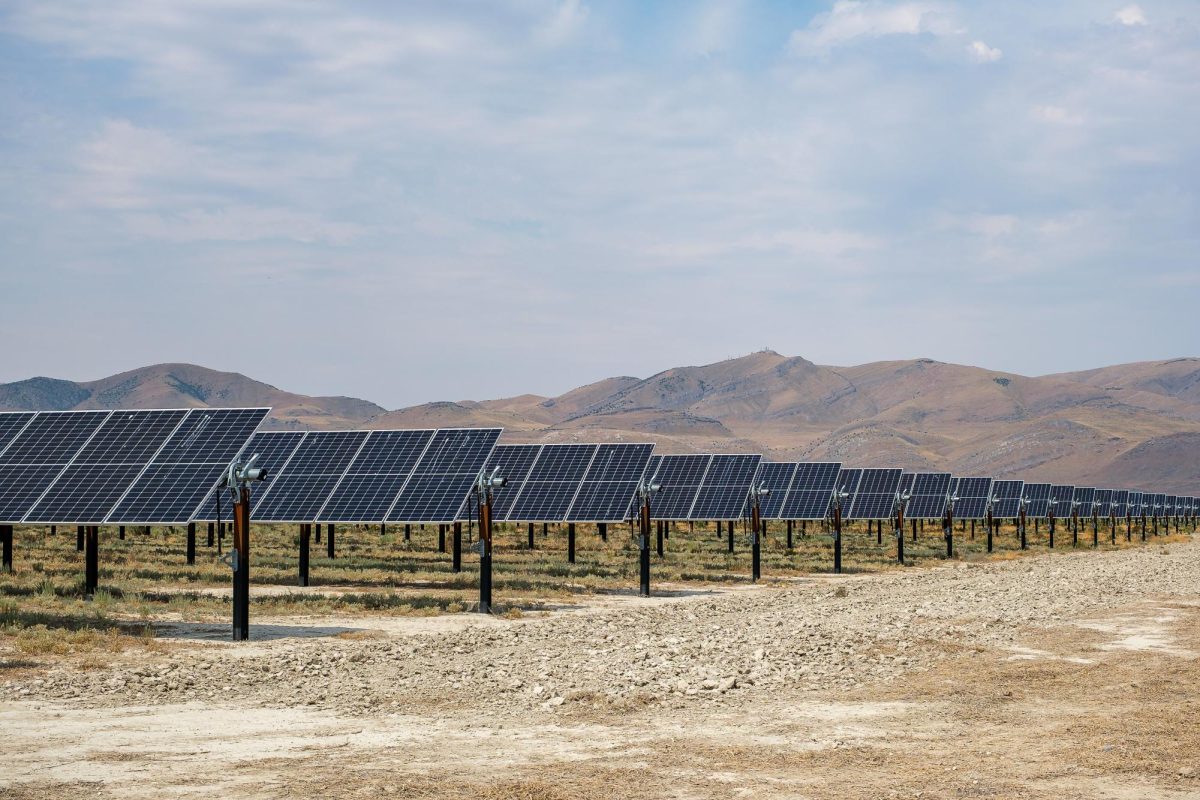On April 25, the Elektron Solar Project reached commercial operation. The project provides renewable power to six Utah-based customers. Salt Lake City is the largest consumer of the farm’s power. The farm has brought Salt Lake City closer to renewable energy goals outlined in the Climate Positive 2040 Roadmap.
The Elektron Solar Project
The Elektron Solar Project is an 80-megawatt solar farm in Tooele County. Besides Salt Lake City, the project provides energy for Park City, Summit County, Utah Valley University, Deer Valley Resort and Park City Mountain Resort.
D.E. Shaw Renewable Investments (DESRI) announced the project’s completion. According to SLCgreen, DESRI is the largest renewable energy developer contracted by Rocky Mountain Power and Mayor Erin Mendenhall for this project. PR Newswire also reported that PacifiCorp has contracted 20 and 25- year power purchase agreements with Elektron Solar under Rocky Mountain Power’s Schedule 34.
“The Elektron Solar Project is going to help us meet the 50% target for municipal operations,” Salt Lake City’s Senior Energy and Climate Program Manager Christopher Thomas said.
Climate Positive 2040 Roadmap outlines this and other renewable energy goals for the city. More information on Salt Lake City’s sustainability goals can be found here.
According to the Elektron Solar Project, “Salt Lake City is the largest electricity consumer and has committed to purchasing roughly half the energy produced by the solar farm … equating to approximately 80% of the city’s electricity usage in a given year.”
Originally, Elektron Solar‘s goal was to “[achieve] net-50% renewable electricity for municipal operations by 2020.” However, the project faced delays due to various challenges. COVID-19, for example, caused manufacturing delays, Thomas said.
“There was also a tariff investigation, looking at whether additional tariffs should be applied to panels coming from Southeast Asia. At times the entire utility-scale solar panel supply chain was frozen to the United States,” Thomas said. “Thankfully, we were able to navigate that. But, it required reworking the underlying contracts a few times, which can be scary in projects like this because everyone has to agree to the new terms. In our case, what it meant was pushing the online date back a couple of times.”
The Future of Renewable Power
Thomas noted that efforts to implement more renewable energy in Utah will likely involve solar, wind, hydro and geothermal energy in the future.
“We’d prefer to see energy sources that serve a program built in Utah. But, there’s a chance those can be built in Wyoming, or potentially even Idaho,” he said.
The Salt Lake City Sustainability Office plans to reach “100% renewable energy for community electricity supply by 2030.” H.B. 411, The Community Renewable Energy Act, set these plans into motion alongside a collaboration with Utah Renewable Communities. More information on these efforts can be found here.
Thomas pointed to another major project in the works called the Utah Renewable Communities Effort.
“That is an effort where Salt Lake City has been joined by 17 other communities across the state and we are partnering with Rocky Mountain Power to create a brand new renewable energy program designed to reach a goal of 100% renewable electricity by 2030,” Thomas said.
This program is still under development. But, Thomas shared this plan’s efforts to involve communities in decision making may be “the first of its kind in the whole country.”
Regarding the significance of community involvement in renewable energy, Thomas said, “Become as energy literate as you can. I’ve been fortunate that I’ve been able to create a career in renewable energy. I think when people don’t really understand how [renewable energy] works, it’s really easy to become confused or even misinformed about these really important decisions.”




